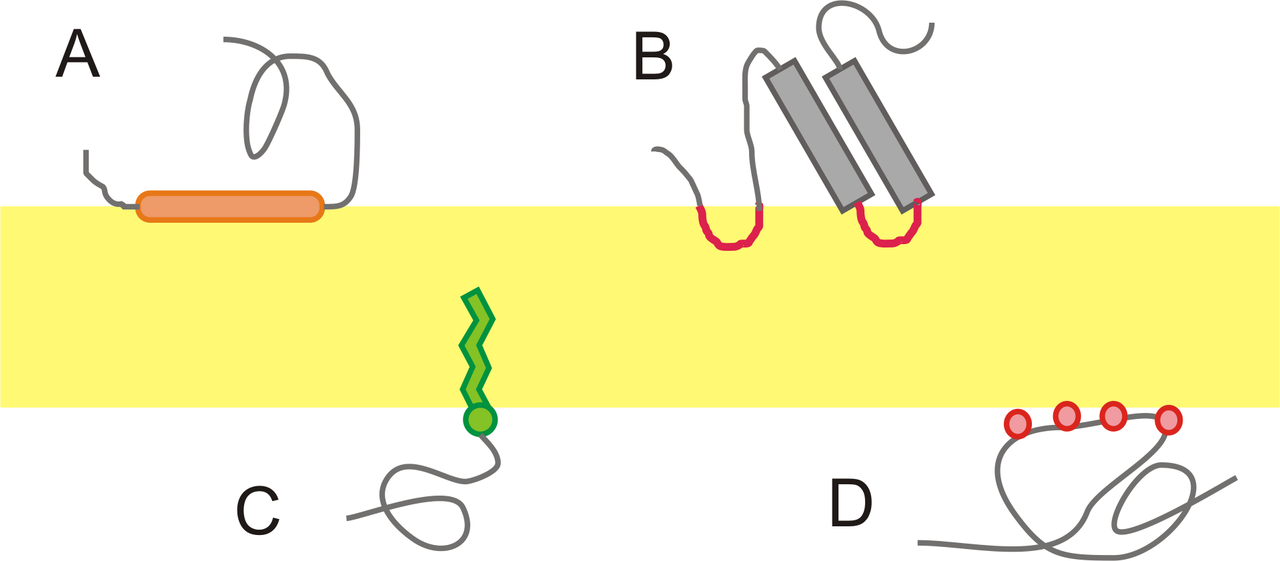3.2: Cell Membranes
( \newcommand{\kernel}{\mathrm{null}\,}\)
One universal feature of all cells is an outer limiting membrane called the plasma membrane. In addition, all eukaryotic cells contain elaborate systems of internal membranes which set up various membrane-enclosed compartments within the cell. Cell membranes are built from lipids and proteins.
The Plasma Membrane
The plasma membrane serves as the interface between the machinery in the interior of the cell and the extracellular fluid (ECF) that bathes all cells. The lipids in the plasma membrane are chiefly phospholipids like phosphatidyl ethanolamine. Phospholipids are amphiphilic with the hydrocarbon tail of the molecule being hydrophobic; its polar head hydrophilic. As the plasma membrane faces watery solutions on both sides, its phospholipids accommodate this by forming a phospholipid bilayer with the hydrophobic tails facing each other. Substantial amounts of cholesterol are tucked within the hydrocarbon tails (not shown).

Integral Membrane Proteins
Many of the proteins associated with the plasma membrane are tightly bound to it. Some are attached to lipids in the bilayer. In others — the transmembrane proteins — the polypeptide chain actually traverses the lipid bilayer (Figure 3.2.2). The figure shows a transmembrane protein that passes just once through the bilayer and another that passes through it 7 times. All G-protein-coupled receptors (e.g., receptors of peptide hormones, and odors) each span the plasma membrane 7 times.

In all these cases, the portion within the lipid bilayer consists primarily of hydrophobic amino acids. These are usually arranged in an alpha helix so that the polar -C=O and -NH groups at the peptide bonds can interact with each other rather than with their hydrophobic surroundings. Those portions of the polypeptide that project out from the bilayer tend to have a high percentage of hydrophilic amino acids. Furthermore, those that project into the aqueous surroundings of the cell are usually glycoproteins, with many hydrophilic sugar residues attached to the part of the polypeptide exposed at the surface of the cell. Some transmembrane proteins that span the bilayer several times form a hydrophilic channel through which certain ions and molecules can enter (or leave) the cell.
Peripheral Membrane Proteins
These are more loosely associated with the membrane. They are usually attached noncovalently to the protruding portions of integral membrane proteins (Figure 3.2.3). Membrane proteins are often restricted in their movements. A lipid bilayer is really a film of oil. Thus we might expect that structures immersed in it would be relatively free to float about. For some membrane proteins, this is the case. For others, however, their mobility is limited:
- Some of the proteins exposed at the interior face of the plasma membrane are tethered to cytoskeletal elements like actin microfilaments.
- Some proteins are the exterior face of the plasma membrane are anchored to components of the extracellular matrix like collagen.
- Integral membrane proteins cannot pass through the tight junctions found between some kinds of cells (e.g., epithelial cells).



